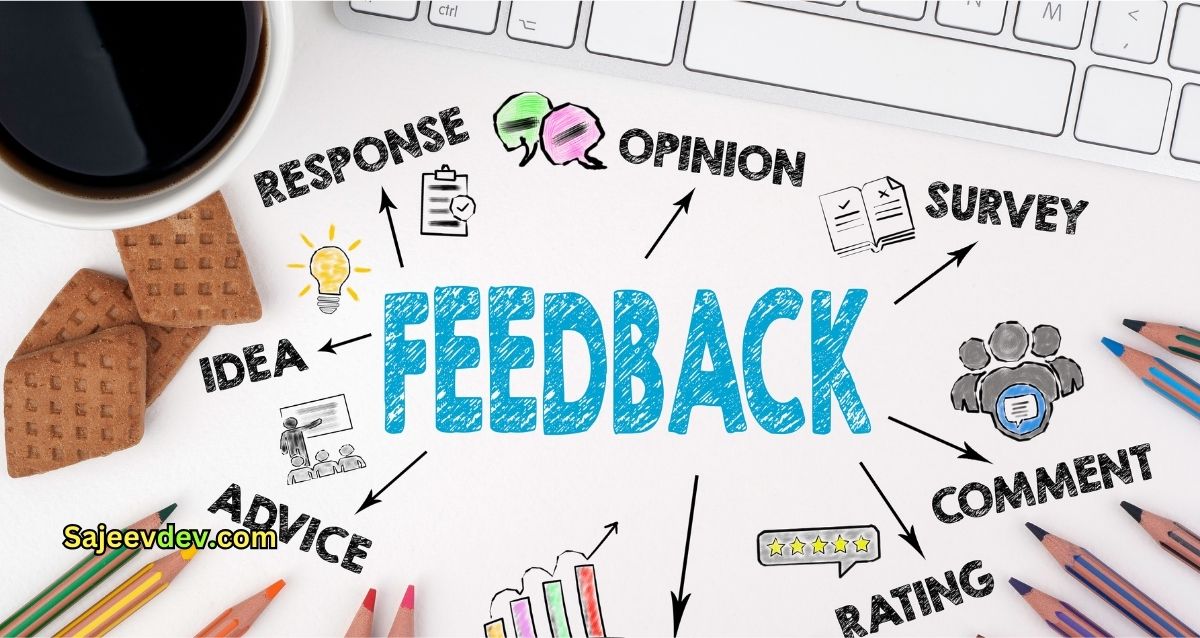In the pursuit of personal and professional growth, feedback plays an instrumental role. It provides insights into our performance, highlights areas for improvement, and reinforces our strengths. However, the ability to actively seek and constructively use feedback is a skill that requires an open mind, a growth-oriented attitude, and a commitment to continuous learning. This article explores the significance of feedback, how to effectively seek it, and ways to utilize it constructively for ongoing development.
Understanding the Importance of Feedback
Feedback is essential for several reasons:
1. Enhances Self-Awareness:
– Feedback provides an external perspective on our actions, behaviors, and performance. It helps us understand how others perceive us and identify blind spots we may not be aware of.
2. Drives Improvement:
– Constructive feedback pinpoints specific areas where we can improve. It acts as a guide for making necessary adjustments and adopting new strategies to enhance our skills and effectiveness.
3. Boosts Motivation:
– Positive feedback reinforces good practices and behaviors, boosting our confidence and motivation. It encourages us to continue striving for excellence.
4. Fosters Growth Mindset:
– Seeking and using feedback constructively cultivates a growth mindset. It reinforces the belief that abilities and intelligence can be developed through effort and learning.
How to Effectively Seek Feedback
1. Be Proactive:
– Don’t wait for feedback to come to you. Actively seek it from peers, mentors, supervisors, and even subordinates. Being proactive demonstrates a commitment to self-improvement.
2. Ask Specific Questions:
– When seeking feedback, ask specific questions that elicit detailed and actionable responses. For example, instead of asking, “How did I do?” ask, “What specific areas can I improve on in my presentation?”
3. Choose the Right Time and Place:
– Seek feedback in a conducive environment where the person providing it feels comfortable and can offer thoughtful responses. Avoid seeking feedback in rushed or stressful situations.
4. Express Gratitude:
– Always thank the person providing feedback. Expressing gratitude shows that you value their input and are open to learning from it.
5. Seek Diverse Perspectives:
– Solicit feedback from a diverse group of people to get a well-rounded view of your performance. Different perspectives can provide comprehensive insights and prevent biases.
Using Feedback Constructively
1. Listen Actively:
– When receiving feedback, listen without interrupting. Focus on understanding the feedback rather than defending yourself or justifying your actions.
2. Reflect on the Feedback:
– Take time to reflect on the feedback. Consider its validity and how it aligns with your self-perception and goals. Reflecting helps in assimilating the feedback effectively.
3. Separate Feedback from Personal Criticism:
– Understand that feedback is about your actions or performance, not about you as a person. Separating the two helps in accepting feedback without taking it personally.
4. Create an Action Plan:
– Develop a plan to address the feedback. Identify specific steps you can take to make improvements. Setting clear, achievable goals helps in implementing the feedback effectively.
5. Seek Clarification:
– If any part of the feedback is unclear, don’t hesitate to seek clarification. Understanding the feedback fully is crucial for making the necessary improvements.
6. Monitor Progress:
– Regularly monitor your progress against the action plan. Adjust your strategies as needed and seek additional feedback to ensure continuous improvement.
Examples of Constructive Feedback in Action
1. Professional Development:
– Case Study: A marketing executive seeks feedback from her manager about her recent campaign. The feedback highlights the need for better market research. She takes this feedback constructively, attends a workshop on market research, and implements the new strategies in her next campaign, resulting in significantly better results.
2. Academic Growth:
– Case Study: A university student receives feedback on his thesis draft from his advisor, pointing out weak arguments and lack of evidence in certain sections. Instead of feeling discouraged, the student revises his work, strengthens his arguments, and ultimately earns high praise for his final submission.
3. Personal Relationships:
– Case Study: In a personal context, an individual seeks feedback from a close friend about their communication style. The friend mentions that they often interrupt during conversations. The individual works on improving their listening skills, leading to more meaningful and respectful interactions.
Actively seeking and constructively using feedback is a powerful tool for personal and professional development. It enhances self-awareness, drives improvement, boosts motivation, and fosters a growth mindset. By being proactive in seeking feedback, listening actively, and creating actionable plans based on the feedback received, we can continuously evolve and excel in our endeavors. Remember, feedback is not a critique of who we are but a valuable resource for becoming the best version of ourselves.









